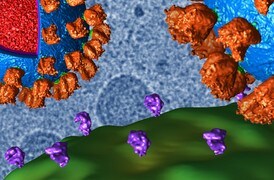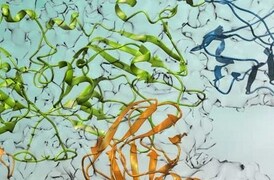How energy-filtering transmission electron microscopy works
Upon interacting with the sample, electrons may scatter elastically or inelastically. The Selectris Imaging Filter allows elastically scattered electrons to pass through, thereby enhancing image contrast. The intrinsic mechanism is that through removing the noise caused by inelastically scattered electrons, the signal-to-noise ratio (SNR) and the contrast is increased.
The capability to use a very stable narrow slit width (<10 eV) provides an additional boost in contrast for single particle cryo-electron microscopy (cryo-EM) and cryo-tomography (cryo-ET), also enhancing resolution and throughput.
For example, let’s compare reconstructions of proteasome 20S with the same amount of particles (see table). A narrower energy slit (i.e. lower energy) leads to higher resolution compared to a larger slit width (20 keV) and even more improved compared to unfiltered image. This is because the B-factor has been reduced meaning less particles are needed to obtain a certain resolution.
Additionally, a narrower energy slit width (10 eV) translates into a lesser number of particles needed to obtain equivalent resolution (370k) compared to using a wider energy slit (see figure and graph). As a result, with the Selectris X Imaging Filter, you can obtain results faster with less data or maximize your resolution efforts.






























